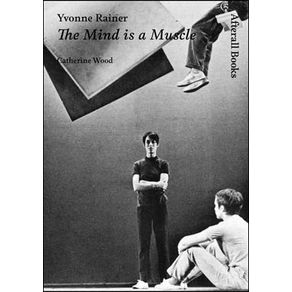In 1968, toward the end of a decade that witnessed civil rights protests, the escalation of the war in Vietnam, and an expanded notion of artistic practice (epitomized by Happenings), Yvonne Rainer presented her evening-length work, The Mind is a Muscle. A choreographed, multipart performance for seven dancers, interspersed with film and text, this major work was built upon a backbone of variations on Rainer's dance solo, Trio A. In this extended illustrated essay exploring The Mind is a Muscle, Catherine Wood examines the political and media context in which Rainer chose to use the dance-theatre situation as her medium and analyzes Rainer's radical approach to image-making in live form.Rainer's work has been linked strongly with minimalist sculpture: she compared the neutral, specific qualities of those objects to her own work-like or ask-like,ordinary dance, and she collaborated early on with Robert Morris. But The Mind is a Muscle manifests an agitated and contradictory relationship to the idea of work in the context of an affluent, postwar America. Wood describes the way the choreography of The Mind is a Muscle proposed a new lexicon of movement that stripped away the gestural conventions of dance or theater narrative in an attempt to present the human subject on her own terms while at the same time manipulating the seductiveness of the image, increasingly being harnessed by capitalism. Rainer's legacy persists through her decision to allow the Trio A from The Mind is a Muscle as a multiple, distributed by being taught to many dancers and non-dancers, proposing, Wood argues, for the art object as code.Choreographer and filmmaker Yvonne Rainer was one of the founders of the Judson Dance Theater in 1962. Her autobiography, Feelings are Facts, was published by The MIT Press in 2006.



